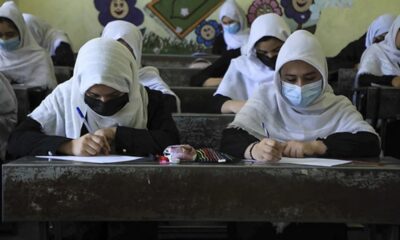World
Saudi crown prince, US national security adviser meet on Gaza, bilateral deal
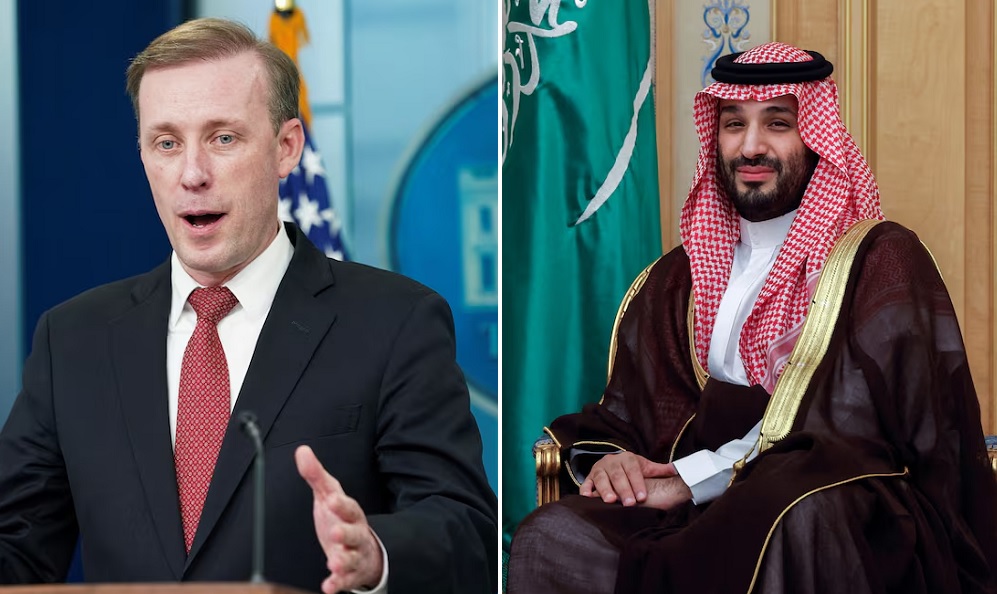
Saudi Crown Prince Mohammed bin Salman and White House National Security Adviser Jake Sullivan met to discuss a broad bilateral agreement and Israel’s war in Gaza, the Saudi state news agency reported on Sunday.
The meeting in the Saudi city of Dhahran reviewed “the semi-final version of the draft strategic agreements between the two countries, which are almost being finalised,” a statement read.
Washington and Riyadh have been discussing U.S. security guarantees and civilian nuclear assistance as part of a broader deal that the U.S. hopes would lead to normalising Saudi-Israeli relations.
The de facto Saudi leader and President Joe Biden’s top security aide also discussed the need to find a “credible track for bringing about the two-state solution” for Israel and the Palestinians, stop the war against Hamas militants in Gaza and facilitate the entry of humanitarian aid, the statement said.
The Biden administration and Saudi Arabia have been seeking to finalise the nuclear agreement, Reuters reported early this month, even as Israel-Saudi normalisation, part of a Middle East “grand bargain”, remains elusive.
The White House said on Friday that Sullivan would visit Saudi Arabia and Israel to discuss bilateral and regional matters, including Gaza and efforts to achieve lasting peace and security in the region.
Saudi Arabia, as the world’s largest oil exporter, is not an obvious candidate for a nuclear pact typically aimed at building power plants.
But the kingdom is seeking to generate substantial renewable energy and reduce emissions under an ambitious long-term plan, while critics say Riyadh might want nuclear expertise in case it someday wished to acquire nuclear weapons, despite safeguards enshrined in any deal with Washington to prevent this.
(Reuters)
World
Russian missile attack wounds 88 in Ukraine’s Sumy, officials say
Zelenskiy said Russia was “the only entity prolonging this war and tormenting both our people and the entire world.
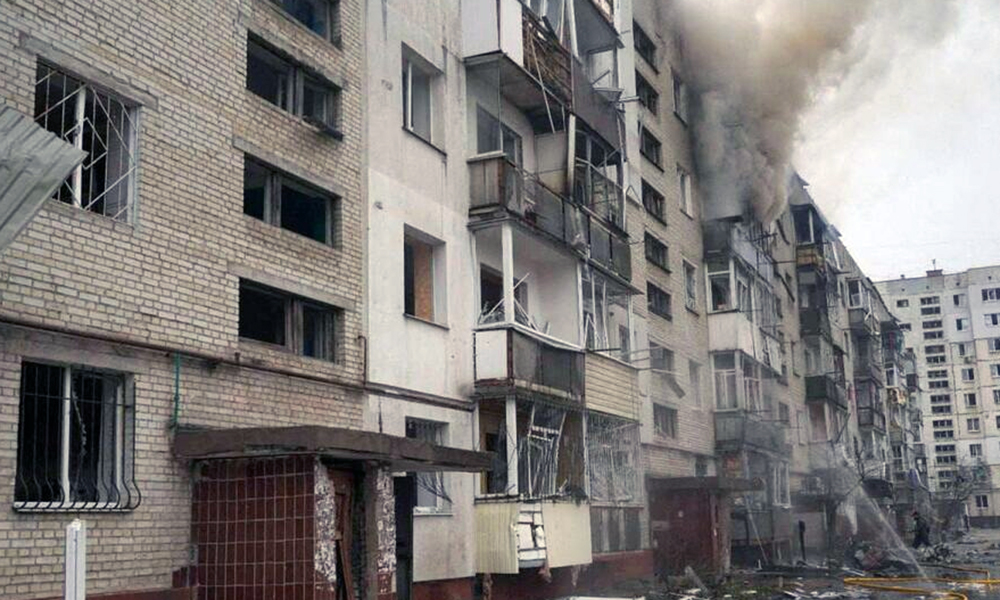
A Russian missile attack hit a densely-populated district of Ukraine’s northeastern city of Sumy, wounding 88 people, including 17 children, on Monday as ceasefire talks, ploughed on, officials said.
Regional governor Volodymyr Artiukh announced the latest casualty toll on national television. He said many more children had escaped injury as they had been evacuated to air raid shelters, Reuters reported.
“They were in the area in a densely-populated area hit by the enemy strike,” Artiukh told the television.
“Two schools fell within the impact zone. I was present when our rescuers cleared the locations where the children were. They were in protective structures. All the children were rescued and evacuated to a safe place.”
Several high-rise residential blocks in the city centre were also damaged, read the report.
Artiukh had earlier spoken in a video that he said was shot at the scene with heavy black smoke, fires and a car with shattered windows in the background. Smoke also rose from the upper floors of a five-storey residential block nearby.
Ukrainian President Volodymyr Zelenskiy deplored the attack in his nightly video address as the latest example of “losses, pain and destruction, something Ukraine never wanted.”
The missile struck the city as Russian and U.S. officials met in Saudi Arabia to discuss a possible ceasefire.
Zelenskiy said Russia was “the only entity prolonging this war and tormenting both our people and the entire world.
“To force Russia into peace, strong measures and decisive actions are needed,” he said. “We are ready to support every strong initiative that makes diplomacy more effective.”
Foreign Minister Adrii Sybiha said Moscow was speaking of peace “while carrying out brutal strikes on densely populated residential areas in major Ukrainian cities.”
“Instead of making hollow statements about peace, Russia must stop bombing our cities and end its war on civilians,” Sybiha said.
Acting Sumy mayor Artem Kobzar said on Telegram an industrial facility was attacked but did not name it.
Sumy, about 30 km (20 miles) from the Russian border, comes under constant drone and missile strikes from Russia.
World
Putin and Trump may have spoken more than twice, Kremlin says
Washington Post journalist Bob Woodward in his 2024 book “War” reported that Trump had direct conversations as many as seven times with Putin after he left the White House in 2021.

Russian President Vladimir Putin and U.S. President Donald Trump may have had more contacts than the two publicly announced telephone calls over recent months, the Kremlin said in video footage published by state television on Sunday.
Trump, who says he wants to be remembered as a peacemaker, has repeatedly said that he wants the three-year conflict in Ukraine to end and has warned of the risks of it escalating into a world war between the United States and Russia.
There have so far been two announced phone calls between Putin and Trump this year – on Feb. 12 and on March 18 – though there has been speculation about much more frequent contact, and also reports that they spoke before Trump was elected last year.
When asked by the most prominent Kremlin correspondent for state television about remarks by Trump that indicated there may have been more than two calls, Kremlin spokesman Dmitry Peskov said information had been released about those calls he knew of.
“Listen, we inform you about the conversations that we are aware of. But we can’t rule out everything else,” Peskov said.
State television’s Pavel Zarubin then asked: “So all sorts of nuances are possible as they say?” to which Peskov replied: “Well, that is how I would answer your question.”
The contacts between Trump and Putin have spooked European leaders who fear the United States could be turning its back on Europe in the hope of striking a peace deal with Russia as part of some broader grand bargain encompassing oil prices, the Middle East and competition with China.
Trump told the Washington Examiner, that he had been speaking to the Russian leader for weeks.
Before the contacts with Trump, Putin last spoke to a sitting U.S. president in February 2022, when he and Joe Biden spoke shortly before the Russian leader ordered tens of thousands of troops into Ukraine.
Washington Post journalist Bob Woodward in his 2024 book “War” reported that Trump had direct conversations as many as seven times with Putin after he left the White House in 2021.
Asked if that were true in an interview to Bloomberg last year, Trump said: “If I did, it’s a smart thing.” The Kremlin denied Woodward’s report.
Reuters, The Washington Post and Axios reported separately that Trump and Putin spoke in early November. The Kremlin also denied those reports.
Putin and Trump may have another phone call if Ukraine continues strikes on Russian energy infrastructure, Peskov said.
Putin agreed to the suspension of such attacks in a phone call with Trump last week. Kyiv, which has said it would be willing to take part in such a partial ceasefire if a document setting out its terms is agreed, has accused Russia of not abiding by Putin’s order, something Moscow denies.
“While the Russian side has been sticking to its word for several days now, the word that the president gave, and to the president’s command, which immediately came into force and was immediately implemented, and is still being implemented, the same cannot be said of the Kyiv regime”, Peskov said.
Russia and Ukraine accused each other on Friday of blowing up a Russian gas pumping station in a border area where Ukrainian troops have been retreating. Russia said on Saturday it reserves the right to a “symmetrical response” to Ukrainian attacks on Russian energy facilities.
Asked if Ukraine’s violation of the agreement may become a reason for another Putin-Trump call, Peskov said: “Absolutely. The presidents confirmed their intention to continue contacts as necessary.”
In another clip released on Zarubin’s Telegram channel earlier on Sunday, Peskov said the latest phone call between Putin and Trump was “a step towards a face-to-face meeting”, adding that Russia-U.S. talks in Riyadh scheduled for Monday would also be such a step, Interfax news agency reported.
World
Thousands of federal agents diverted to Trump immigration crackdown
Trump’s hardline approach to deporting immigrants has intensified America’s already-stark partisan divide
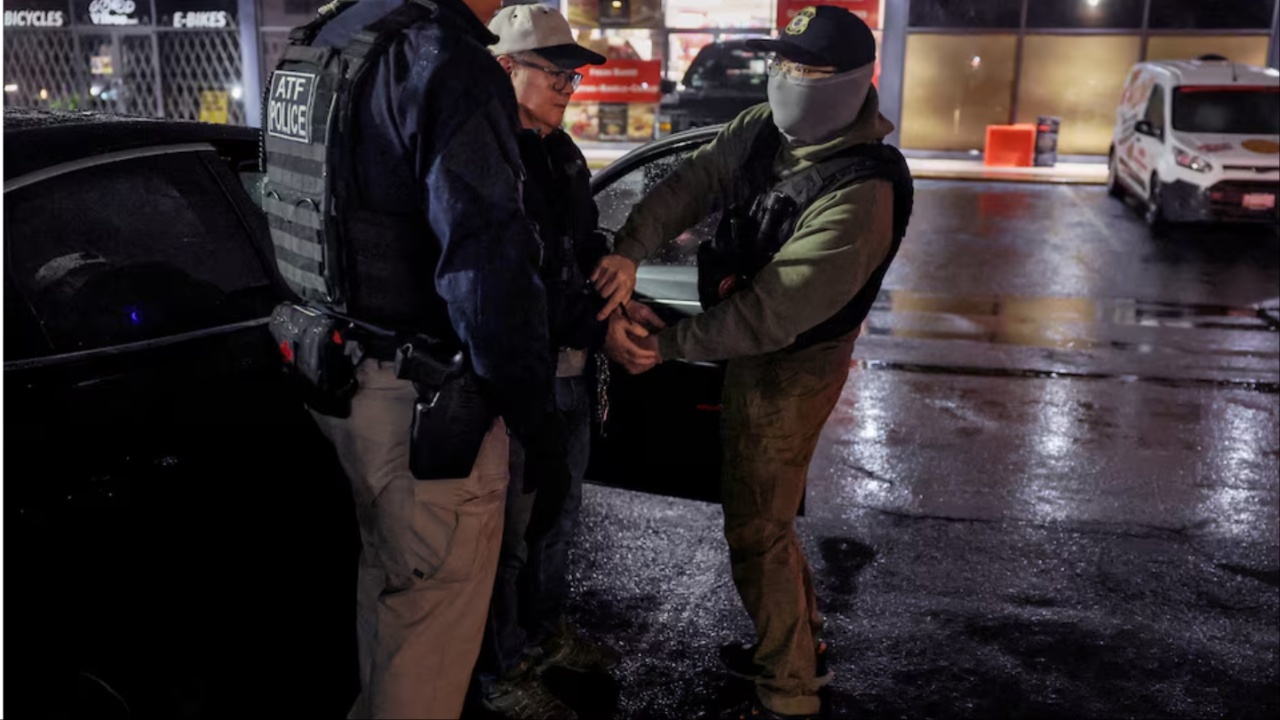
Federal agents who usually hunt down child abusers are now cracking down on immigrants who live in the U.S. illegally, Reuters reported.
Homeland Security investigators who specialize in money laundering are raiding restaurants and other small businesses looking for immigrants who aren’t authorized to work and agents who pursue drug traffickers and tax fraud are being reassigned to enforce immigration law.
As U.S. President Donald Trump pledges to deport “millions and millions” of “criminal aliens,” thousands of federal law enforcement officials from multiple agencies are being enlisted to take on new work as immigration enforcers, pulling crime-fighting resources away on other areas — from drug trafficking and terrorism to sexual abuse and fraud, Reuters reported Sunday.
This account of Trump’s push to reorganize federal law enforcement – the most significant since the September 11, 2001, terrorist attacks – is based on interviews with more than 20 current and former federal agents, attorneys and other federal officials.
Most had first-hand knowledge of the changes. Nearly all spoke on the condition of anonymity because they were not authorized to discuss their work.
“I do not recall ever seeing this wide a spectrum of federal government resources all being turned toward immigration enforcement,” said Theresa Cardinal Brown, a former Homeland Security official who has served in both Republican and Democratic administrations.
“When you’re telling agencies to stop what you’ve been doing and do this now, whatever else they were doing takes a back seat.”
In response to questions from Reuters, Homeland Security Assistant Secretary Tricia McLaughlin said the U.S. government is “mobilizing federal and state law enforcement to find, arrest, and deport illegal aliens.”
The Federal Bureau of Investigation declined to respond to questions about its staffing.
In a statement, the FBI said it is “protecting the U.S. from many threats.”
The White House did not respond to requests for comment.
The Trump administration has offered no comprehensive accounting of the revamp. But it echoes the aftermath of the 2001 attacks, when Congress created the Department of Homeland Security that pulled together 169,000 federal employees from other agencies and refocused the FBI on battling terrorism.
Trump’s hardline approach to deporting immigrants has intensified America’s already-stark partisan divide.
The U.S. Senate’s No. 2 Democrat, Dick Durbin, described the crackdown as a “wasteful, misguided diversion of resources.”
In a statement to Reuters, he said it was “making America less safe” by drawing agents and officials away from fighting corporate fraud, terrorism, child sexual exploitation and other crimes.
U.S. Deputy Attorney General Todd Blanche, in an interview with Reuters, denied the changes across federal law enforcement were hindering other important criminal investigations.
“I completely reject the idea that because we’re prioritizing immigration that we are not simultaneously full-force going after violent crime.”
He said the crackdown was warranted. “President Trump views what has happened over the last couple years truly as an invasion, so that’s how we’re trying to remedy that.”
On January 20, his first day back in office, Trump signed an executive order, directing federal agencies to team up to fight “an invasion” of illegal immigrants. He cast the nation’s estimated 11 million immigrants in the U.S. illegally as the driving factor behind crime, gang violence and drug trafficking – assertions not supported by government statistics, – and accused immigrants of draining U.S. government resources and depriving citizens of jobs.
Almost immediately, federal law enforcement started posting photos of the crackdown to social media: agents wore body armor and jackets emblazoned with names of multiple agencies – including the FBI, Drug Enforcement Administration, and the Bureau of Alcohol, Tobacco, Firearms and Explosives, known as ATF – during raids on immigrants without proper legal status.
Before this year, ATF had played almost no role in immigration enforcement. It typically investigated firearms offenses, bombings, arson and illicit shipments of alcohol and tobacco.
But since Trump’s inauguration, about 80% of its roughly 2,500 agents have been ordered to take on at least some immigration enforcement tasks, two officials familiar with ATF’s operations said. The ATF agents are being used largely as “fugitive hunters” to find migrants living in the U.S. illegally, one of the officials said.
The DEA, whose roughly 10,000 staff have led the nation’s efforts to battle drug cartels, has shifted about a quarter of its work to immigration operations, said a former official briefed by current DEA leaders on the changes. Two other former officials described the commitment as “substantial” but did not know precisely how much work shifted.
Many of the reassigned federal officials have had little training or experience in immigration law, the sources said.
The results, so far, are mixed: the number of migrants seeking to cross the southern U.S. border in February was the lowest in decades and the number of people detained over immigration violations has surged. That hasn’t yet led to an increase in deportations, but experts expect a jump in those numbers in coming months.
-

 Latest News5 days ago
Latest News5 days agoPakistan once again urges IEA to act against militants
-

 Sport4 days ago
Sport4 days agoAFC Beach Soccer: UAE thrash Afghanistan 7-1 in opener
-
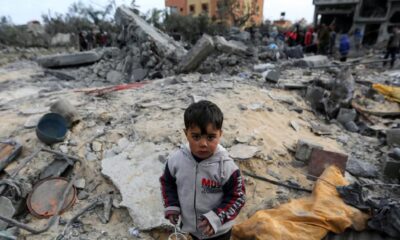
 Regional5 days ago
Regional5 days agoAt least 91 killed in Gaza as Israel abandons ceasefire, orders evacuations
-

 Latest News4 days ago
Latest News4 days agoAmerican freed by IEA reunited with wife, former cellmate, in US
-
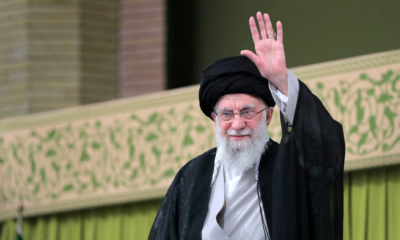
 Regional4 days ago
Regional4 days agoIran’s leader says Yemen’s Houthis act independently, warns against US action
-
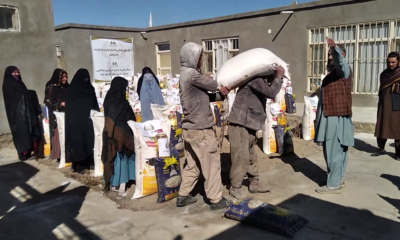
 Latest News4 days ago
Latest News4 days agoBayat Foundation delivers Ramadan aid to needy families in Bamyan
-

 International Sports3 days ago
International Sports3 days agoBoxing legend George Foreman dies at 76
-
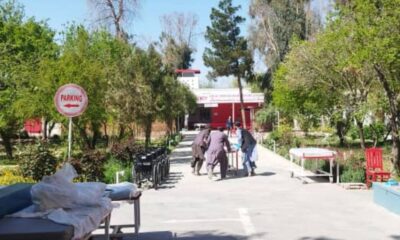
 Latest News4 days ago
Latest News4 days agoEighteen injured after dispute between two brothers in Helmand












